by Sr. Jo Anne Kelly MMM Ireland 23.10.2024
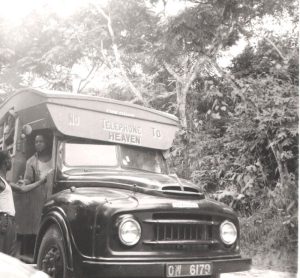 Recently I watched a webinar on the campaign to raise awareness about Obstetric Vistula and the awful effect it has on so many women in the world, causing them loss of dignity and forcing them to live in isolation – as outcasts.
Recently I watched a webinar on the campaign to raise awareness about Obstetric Vistula and the awful effect it has on so many women in the world, causing them loss of dignity and forcing them to live in isolation – as outcasts.
That webinar reminded me about many women I knew but especially about Eliza.
For some years I lived with Sr. Dr. Ann Ward who pioneered special techniques for surgical repair of obstetric fistula. Women came from far and near for the surgery. These women were very slow to make themselves known or to come out publicly.
One of our MMM Sisters, Winnie, in a distant mission, set up a plan for her area. She engaged people around the area to seek out the women and encourage them to come to her for help. The women started coming bit by bit as news went around.
Every three weeks Winnie, with a faithful driver, Augustine, made the trip in a minibus to the Family Life Centre where Sr. Ann worked, bringing with them the women who had agreed to come in. Winnie would stay overnight and next day take home the women of the previous trip who now had the surgery and were going home free.
Eliza was one of these women. Sr. Ann always said that every case was different. Eliza was different because she had an added complication and was not ready to go home with her group. She needed another week.
My own work took me to many parts of the country and it happened I was going in Eliza’s direction just over a week later. I offered to bring her home. I went to visit her a few times during the week, just so I wasn’t a complete stranger to her. Although she joined in the activities and social gatherings of the centre she was apprehensive. She was missing her group especially as she did not understand the local language. She had been to primary school and had quite good English. Having lived in more or less isolation for years, every new thing was a big adjustment, including going home and in a car.
hen, she would forget all of that and remember the one big, big thing that had happened – she was healed. She was quite ecstatic about that. She would throw up her arms, praise and thank God, praise and thank Dr. Ward and everybody else in the compound. One could not but rejoice with her then.
We set off early in the morning. She was quiet. I glanced round a few times. She was staring out, watching everything. I explained to her we were going home the way she had come. She said “I saw nothing when I was coming” Now she started seeing everything, houses, trees, children going to school, goats straying on the road, women with market stalls, fruit, bunches of bananas and plantain, naming everything she saw. Every now and again her hands would go up thanking God for it all. It was as if the world had opened up for her.
On the motorway there was little to see except road. I had a cassette player. Though my choice of music could not have been hers she sang along with everything, even the Irish tenors.
Nearing her area, I asked about her home and she told me we had passed the road to her home. I was stopping to turn back. She said No! No! I must first go and thank Sr. Winnie. I will find my way back. We saw Winnie, and she was well thanked.
I brought her home. Her village was miles off the main road. She was quiet then as she gave me directions and I knew this was a very big test for her. We stopped outside a little mud house. She made some kind of call. After some time a little old lady came out on her stick and whatever words Eliza said to her, her face changed, her old eyes lit up and the two women embraced and talked and hugged again and again.
As I was saying goodbye, the little old lady took my hand and started praying in her language.
Eliza said “My mother has given you her blessing.”
by Sr. Noeleen Mooney MMM Ireland 20.10.2024
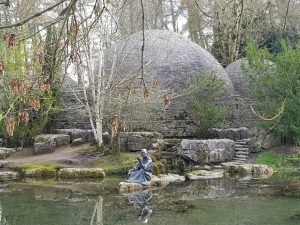 This year, 2024, marks the fifteen hundredth anniversary of the death of Saint Brigid – a mid-boggling fact.
This year, 2024, marks the fifteen hundredth anniversary of the death of Saint Brigid – a mid-boggling fact.
As a native of Kildare, I decided to make my annual retreat in Solas Bhride Christian Spirituality Centre, run by the Brigidine Sisters in Kildare town. In coming apart, I hoped to re-ignite in myself some of the flame which Brigid kindled, and which is very much alive in this place of prayer.
i stayed in one of the three hermitages on the grounds and self-catered with all the facilities provided. The grounds are very nature-friendly and as I ate my breakfast, I watched the rabbits outside my window nibbling theirs!
Also on the grounds is a labyrinth – ideal for slow meditation, a mini oak grove, formed from saplings planted in 2007 from the original oak tree in Tullow which was planted at the founding of the Brigidine Sisters in 1807.
The Centre itself is built in the shape of a St. Brigid’s Cross and is available to individuals and groups for all kinds of gatherings connected to the legacy of St. Brigid – spirituality, peace-making, care of creation, advocacy for the poor, and legendary hospitality, wonderfully carried out by the present Sisters and staff. St. Brigid’s flame is being tended in the Centre since it was re-lit in Kildare town in 1993 and burns as a beacon of hope, justice and peace for our world.
I visited the two St. Brigid’s wells nearby – one beside the National Stud – and was drawn into the mystery and call of holy wells. Daily Mass was celebrated in St. Brigid’s parish church, a fifteen-minute walk from the Centre, or in White Abbey, home of the Carmelite Fathers.
As a place of peace, solitude and prayer, I highly recommend it!
by Sr. Keresifon Ekanem MMM Nigeria 16.10.2024
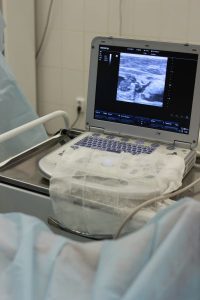 Oh dear! I felt frustrated when I received the news that the supervision team from the Ministry of Health (MOH) to our Facility had asked me to stop practicing as a Nurse/Midwife in my first country of mission for some reasons about country policy. So, I won’t meet the pregnant women again, and will stop catching babies? I will really miss this!
Oh dear! I felt frustrated when I received the news that the supervision team from the Ministry of Health (MOH) to our Facility had asked me to stop practicing as a Nurse/Midwife in my first country of mission for some reasons about country policy. So, I won’t meet the pregnant women again, and will stop catching babies? I will really miss this!
Not to worry, a thought flashed into my mind, “You will meet them when they come for antenatal care and the mothers when they come for immunization.” Great! I will have more time now to give health talk to them. I will also go for more sensitization and outreach in the neighboring villages as well as do other tasks. Sure, I did!
Meanwhile, there was a need for a sonographer in our Ministry and a suggestion to delve into this field emerged. I grabbed it. Thanks to my community members, and leaders who recommended and approved it. The experience was great, and I am excited with this new skill. The fear of studying in a foreign language and the struggle was soon forgotten.
Remember my initial feeling? Frustration! What followed that was really fantastic! I met more pregnant women on daily basis and was in contact with babies even from their different stages of development in the womb. A very interesting experience! This experience reveals at every moment the awesomeness of God in His work which is beyond human comprehension. God is great, worthy of our praise and reverence. I feel excited about my new knowledge, and I am passionate about my work as I put this skill into use. It offers me an opportunity to still give full attention to mothers and children and care for them. This happens each day as I attend to mothers to check for the movements, heartbeats, sex, presentation, and the general well-being of their fetuses in the womb.
I see a deep connection it has with the dream of Mother Mary Martin, our Foundress, whose primary aim of founding the Congregation is the “Care for Mother and Child.” Meanwhile, it also offers an opportunity to share a message of hope and bring Christ to those whose reports do not meet their expectations. These expectations range from non-existence of pregnancy for those who assume they are pregnant, loss of a pregnancy (miscarriage), or not having the desired sex of their fetus. Rendering my services to these women is healing both to themselves and to their spouses who when they learn of the care and attention they receive also long to come and most importantly for them to see how their fetuses (babies) are doing in the womb. This gives them so much joy! Nevertheless, I now have the opportunity to use all my skills in my new mission and it is very valuable!
Really, “A blessing in disguise it was!”
by Sr. Margaret Anne Meyer MMM USA 13.10.2024
 (continued from previous blog)
(continued from previous blog)
About three months into my surgical rotation, I received the news that I had to leave it and prepare to go to Uganda. I was shocked as well as pleased to be going on the missions to Uganda. Mr. Sheehan told me I would regret it. I was trying to follow what I had been told.
My parents wanted to see me before I left for Uganda but unfortunately my mother’ s brother died, and my father came with my brother, David, whom I had not seen for seven years. He was a boy of fourteen at a level with my shoulders when I left USA, and now he was a very handsome man of twenty-one, his six feet towering over me. I hardly recognized him. I was so extremely glad to see him. He showed me pictures of the beautiful woman, Judy, whom he intended to marry. Daddy liked her too. David stayed with the valet of Mother Mary’s brother and my Father stayed in the Guest Department. When it was time for David to leave, the kind valet packed his dirty clothes so well that the customs man in Kennedy airport thought he had bought new clothes in Ireland and wanted him to pay a fee. He had a tough time convincing him that these were his dirty clothes.
Mr. Sheehan, Dr. Connolly and their wives had been to a conference in Brooklyn, New York, a few months previously and my father had met them at Kennedy Airport and invited them home for dinner. They knew my father and invited him to their homes too. Dr. Marie Sheehan even gave my father the use of her car while he was visiting me.
I still had a few days of my rotation to finish but had time to show my father and David around the hospital. David and I had our picture taken on the roof where the Statue of the Visitation was placed. I could not get over how handsome he was and have treasured that picture.
We all had an enjoyable time together. We visited some od Dad’s friends at work who had retired in various places in Ireland. M We also visited Dublin, and I took him to see Miss Dowling, whom we visited in the Royal Home for the Incurables. She was a longtime friend of Sr. Magdalen O’Rourke. She was delighted to see us both. My father kissed her on the cheek, and this impressed her very much. She told me so when she sent me a Mass card six months later when she found out my father had died of a heart attack.
At that time, I was unaware that this may be the last time I would see Daddy alive, but he knew; as he told Sr. Mary O’Neill, who served him his meals in the Guest Department, that he would never see me again. She told me this in 1970 when I visited Drogheda on my first home leave from Uganda. But that is another story.
by Sr. Margaret Anne Meyer MMM USA 09.10.2024
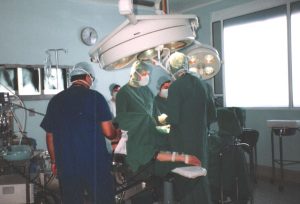 It was with a heavy heart that my obstetrical internship had ended. I remember being puzzled at the excitement of Mr. Sheehan successfully removing a diseased kidney. The kidney was not crying and showed no signs of life, like a baby did. It took me awhile to get into the thrill of excising tumors and setting bones which would restore a person to full life again. Let me explain to American readers that a fully medically qualified surgeon gets the coveted tile of Mister for historical reasons. The other consultant on the Surgical team taught me the principles of surgery and I loved assisting at operations for both of them.
It was with a heavy heart that my obstetrical internship had ended. I remember being puzzled at the excitement of Mr. Sheehan successfully removing a diseased kidney. The kidney was not crying and showed no signs of life, like a baby did. It took me awhile to get into the thrill of excising tumors and setting bones which would restore a person to full life again. Let me explain to American readers that a fully medically qualified surgeon gets the coveted tile of Mister for historical reasons. The other consultant on the Surgical team taught me the principles of surgery and I loved assisting at operations for both of them.
During the summer months, a few children were brought to the Casualty Department in a severe state of shock after being stung by a jellyfish. Fortunately, they could be resuscitated and come back to life. It was very frightening for all of us, family, and hospital staff. They had been swimming in the Irish Sea. The Gulf Stream comes up the west coast of Ireland and these creatures come with it. As I mentioned before, we had Clinical Clubs, and I decided to look up the mechanism of a jellyfish sting and found it to be the same mechanism as the instrument used in a duodenal-jejunum biopsy. Perhaps this procedure is not done any more, but the biopsy was taken when a little cutting edge was released. To me it looked exactly like what a jellyfish did to inject its venom.
Traffic accident victims were admitted quite often. Many did not survive because seat belts were just coming in then, and many people still did not use them. I was terrified at the thought that a split-second decision could mean life or death to these patients. Again, the Sister Nurses taught me valuable lessons on how to care for the patients. Just do the most needed procedure to save a life and forget your fears. Concentrate on the person in front of you who needs help. I am very indebted to all the MMM Sister nurse and lay staff who formed me into a Doctor who was able to function on the Missions with a heart and with confidence in God.
I found it remarkable how surgical repair of wounds produced much healing. Mr. Sheehan was particularly good at skin grafting and he taught me how to do this. It came in useful later in the Missions, especially when working with patients with severe burns.
As time went on, I liked what surgery entailed in examining patients for anaesthesia the night before surgery and talking to them about it. Now there is one day in Ambulatory Surgery.
Night call was especially challenging when patients came in haemorrhaging and trying to keep them alive with blood transfusions. The consultants would know when to watch and when to intervene with their years of experience, but I found it hard to know the difference. I kept in close contact with them on the phone.
Often those with surgical emergencies like appendicitis would be admitted during the night. Most often they could be operated on early the next morning. Again, it was a phone call to the consultant to determine the seriousness of the patient.
On two mornings a week we had ward rounds followed by attending the Surgical outpatients for new referrals and follow up visits. If I happened to be on call the night before I could sleep later and attend the 8:15 Mass celebrated in the hospital chapel. We would be ready for the rounds by 9AM. The other three mornings found us in the operating theatre. (to be continued…)
by Nadia Ramoutar MMM Communications Coordinator Ireland 06.10.2024
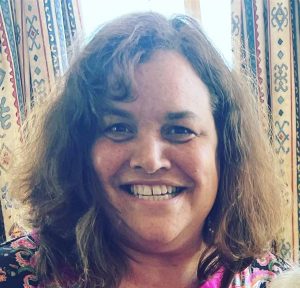 It was a horrible feeling I had not had since I was a little girl. The painful experience of feeling like I was following razor blades made swallowing even water so unbearable that I had to go to the doctor. Tonsilitis was her verdict. The childhood memories returned and I recalled the painful experience I had not had for many years, thankfully.
It was a horrible feeling I had not had since I was a little girl. The painful experience of feeling like I was following razor blades made swallowing even water so unbearable that I had to go to the doctor. Tonsilitis was her verdict. The childhood memories returned and I recalled the painful experience I had not had for many years, thankfully.
It was so difficult to speak that I actually just gave up. I gargled with salt water and drank lemon, ginger and honey tea. I also took the antibiotics the doctor prescribed four times a day. Everything important would just have to wait. I surrendered.
While I was unable to speak and snuggled up in bed surrendering to just how awful tonsilitis feels even as an adult, a thought occurred to me. I am so dependent on my voice that when I am without it I feel so lost.
An unexpected spiritual silent retreat occurred over the weekend as I tried to heal. I was very aware of the privilege of being able to be in a warm and comfortable bed to heal. During my time visiting the missions in Africa, I was aware of how many people slept on concrete floors in their homes with no mattress.
I was also aware that I was able to see my GP easily and afford to pay for the visit and also the medication was ready at the chemist when I arrived because the GP’s admin had emailed them the prescription. I didn’t even have to wait for it to be sent.
As I reflected on how fortunate I was to be sick in a way that was temporary. I didn’t have something that would linger with the care I was getting. But, I thought of the people facing palliative care on concrete floors without any hope for healing or recovery.
My voice soon returned and I felt better within a few days armed with a great appreciation for the importance of my own voice. During my illness, I listened to our new MMM Podcast series. It is so wonderful now that we are able to share the voices of our own MMM Sisters with the world – in their own voices.
I was listening to Sr Mary Doonan describe what it was like when a new illness started to emerge in the missions in the early 1980s – a disease that we came to know as AIDS. What an incredible story to hear from a woman who was devoted to being there for people in their darkest hours. Now, we have come so far in the treatment of AIDS and HIV. What an incredible journey.
If you get some time and you haven’t already listened to our Sister Story Podcasts, please do. Each one is incredible. It is our goal to interview every MMM Sister we can so more will be coming each month. Stay tuned.
by Sr. Keresifon Ekanem MMM Nigeria 02.10.2024
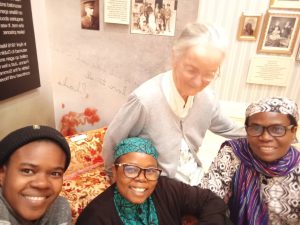 It was a singular privilege to have participated in the April 2024 Medical Missionaries of Mary (MMM) Heritage Experience. The program went well and I really enjoyed every bit of it, the spiritual as well as the social aspects of it.
It was a singular privilege to have participated in the April 2024 Medical Missionaries of Mary (MMM) Heritage Experience. The program went well and I really enjoyed every bit of it, the spiritual as well as the social aspects of it.
Sharing of mission experiences by our older Sisters was so enriching and inspiring. One can only imagine the passion and zeal with which they engaged with their missions especially in Africa – some still wish they can come back, of course for good while others wish they had the opportunity even for once. They talked about the people they worked with and the places they have been to with so much love in their hearts. The challenges they faced of bad roads, poor accommodation facilities and sometimes nothing really to start with were just stepping stones for them to do more for the salvation of souls. We still encounter some of these challenges today in our different missions. MMMs, trust us! We go to where others do not dare to go to, where human need is greatest, with openness and total trust in God. No wonder Mother Mary Martin said, “Nothing is too hard for those who love.” We thank her for laying such a solid foundation for us, her Sisters.
May 2, 2024 was the day for us to say goodbye to our beloved Sisters in the Motherhouse against May 3 because we were going to take off at the crack of the dawn. This was done after supper. We all expressed our gratitude to one another and we all wished we had more time together again. But we all knew that no time will ever be enough. If we were to have more time together again, we will still feel the same way at the end of that time. Goodbyes are hard to say! But we meet to part and part to meet.
Meanwhile, two aspects stood out in our goodbyes. First, in the early morning of the following day, the Sisters were gathered at the brown door, as it is called, even before us who were travelling, to say the final goodbye! It was really amazing their love and care. We have left but the memory is evergreen and will always be! Indeed, Sisters, you are great!
Secondly, at the end of the goodbye to other Sisters who were present the previous day, we stayed a bit longer with Sr. Jo Anne Kelly to chat. Wondering why? She had been a Directress to us either as Aspirant or Novice. The good old times were reminisced again for the last time just before we left. I asked her if she could take us again to Mother Mary Room – a sacred space, and the place I loved so much in the house. She responded in the affirmative and we were excited. On entering the room, we found a cushion we did not see before and it was clearly marked that Mother Mary sat on it in her life-time. We could not but sat on it, excited that we had such a great privilege. This was in addition to other privileges in the room including kneeling on her kneeler to pray before the crib – the Mystery of the Incarnation that inspired her and thus gave birth to the MMM Congregation. Again, Sr. Jo Anne told us a few other things about Mother Mary that we never heard before like initiating the praying of the Office in English which was being said initially by all in Latin. At the end, she prayed for us and encouraged us to continue to live out the MMM Healing Charism and inspire the young ones by our lives.
In the Mother Mary Room, the fullness of the Goodbyes was accomplished!
by Vera Grant AMMM Ireland 29.09.2024
 And so the saying goes:
And so the saying goes:
‘A daughter is a daughter all of your life, a son is a son until he takes a wife’.
Does it ring true? Not to the many people to whom I have spoken.
As parents to our children we accept the responsibility ‘like an eagle that watches its nest, that hovers over its young’(1) and when the time comes for them to spread their wings it is hard to accept that they are like arrows in the hands of a warrior.(2) We release them hoping and yet knowing they will find their destination.
I have often heard the lament that once they get married, they forget they have a mother. When the grandchildren arrive then it’s as if you ceased to exist.
What we did not expect was to lose something of ourselves, our identity and our role. From being number one we find ourselves slipping down the rungs of the ladder…our pole position pulled from under us.
It is not just sons and daughters but also brothers and sisters. A friend, one of six children, recognised that the responsibility of looking after her elderly mother had slowly and without any consultation become her role. She says is happy to be there, living with and caring for her mother recently diagnosed with dementia but what she finds intolerable is the attitude of her siblings who feel they have the choice if not the right to prioritise their own lives, their work and their own families.
The once-a-week visit is often curtailed by the all too familiar comment, ‘I need to get back home / get the dinner on / see what they are up to…. The excuses are endless. ‘I am at the bottom of their list, last in the pecking order,’ she says with a roll of the eye.
Sadly, it’s not just the married sons and daughters but the same for can be said of those young people starting university and moving away from home. Once the tears have dried, promises made it is not long before the excuses start, ‘I want to stay on this weekend, its freshers’ week and everyone is going out. Yes, I will miss Sunday dinner but sure there’s always next week, love you lots, see you soon, bye’ and the screen goes blank. Staring into the emptiness the loss and rejection seem overwhelming.
We have all been there, in one way or another and so it felt like an answer from God when the priest at Mass talked about loneliness, lack of purpose and feeling totally unloved or even worse unlovable.
He asked us to remember that we are loved, we are lovable, we are children of God and his love far surpasses all.
(1) DEUT 32:1-12
(2) PSALM 126(127)
by Sr. Sheila Campbell MMM Ireland 25.09.2024
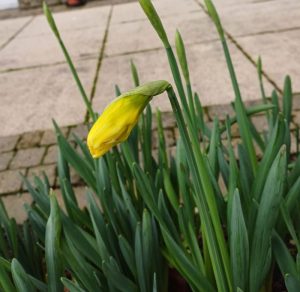 Earlier this year I was watching the daffodils shooting up out of the ground. They came early this year at the beginning of January. But instead of making me lament about our climate crisis, I began to think about the process of hibernation itself. Why do some plants and animals hibernate anyway? What is the advantage of lying still in a cold dark place for a prolonged period, often for many months?
Earlier this year I was watching the daffodils shooting up out of the ground. They came early this year at the beginning of January. But instead of making me lament about our climate crisis, I began to think about the process of hibernation itself. Why do some plants and animals hibernate anyway? What is the advantage of lying still in a cold dark place for a prolonged period, often for many months?
As I was asking myself these questions, I had another ‘lightbulb moment’. Have I not had these periods of hibernation myself. Oh, on the surface I was all business as usual. I can put on a good face. But inside at times have been what I used to call the “fallow periods”. These are times when I am not particularly productive or creative. I follow along, cling to routines and somehow the time passes. I am neither into belief nor unbelief, dutiful rather than ardent, a disciple rather than an apostle.
What is the purpose of hibernation? In animals, bears, for example, go into hibernation in the winter months when food is scarce. Maybe it is the same with us – I go through a ‘fallow period’ when the inner food that nourishes my soul is not available. Instead of lamenting these periods, I need to relax into them, knowing that God is actually giving me a spiritual rest period! Sometimes it helps to talk to someone. Sharing the experience of hibernation often is enough to re-kindle energy. The other person provides the “food” I need to come out of hibernation. It can also be comforting to know that other people go through the same experience at times!
Sometimes I pick up a favourite book or listen to a well-loved piece of music. But often I am called to just twiddle my thumbs and wait and wait.
So, let us thank God for the gift of “inner hibernation” and just ask God to keep us company as we sit in the darkness and wait it out.
by Sr. Joanne Kelly MMM Ireland 22.09.2024
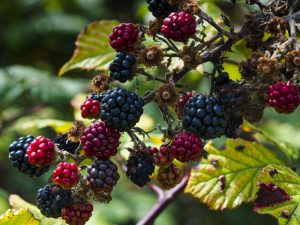 It is blackberry time. On the left side of our driveway there is a whole bank of blackberries at various stages of ripeness, green, red, and black and many traces of where birds or insects have already feasted from the juicy fruit.
It is blackberry time. On the left side of our driveway there is a whole bank of blackberries at various stages of ripeness, green, red, and black and many traces of where birds or insects have already feasted from the juicy fruit.
They bring me back to the time when we were children. We picked blackberries during the whole season. Near to us was Fruitfield factory which made all kinds of jam, including blackberry jam. So blackberry picking, as well as something we loved doing, was a business for us. It was wartime and money was scarce and my mother promised the money would be used to buy us new shoes for the winter.
One year the older ones of us went picking, our little brother was too small. Many children in the countryside were picking. We were only allowed to pick from any public hedges, along the roads and from our own fields. We had tin cans with tight fitting lids bought from the travelling people who made them and came around selling. They were ideal for blackberries as no drop of juice would be lost. Juice had weight and we were paid by the weight.
Every day we set out after school with our cans and a long stick with a fork on it to pull down those beyond our reach. The fruits had to be picked gently as they broke up so easily. So we really had to get into the bushes and briars, getting scrapes and scratches, with hands bleeding at times. There was competition to see who would be first to fill their can. However we eventually helped each other so that we all came home with full cans if possible. The fruit was then emptied into buckets, careful to wait for every possible drop of juice to fall! Then the cans were thoroughly washed ready for the next day. Once a week a van came from the factory, collected our blackberries, weighed them and paid us accordingly. My mother held the money, but we counted it every week to see how we were doing.
In time the season passed and the shoes were bought for those of us going to school.
Mam promised our youngest brother he would get his shoes “out of the pigs”. There is no regular income in a small farm and the next time money would come in would be when the pigs were sold.
So some weeks later it was time for the pigs to go. My dad had bought them as piglets early in the year and they were now big and fat and ready for the market. There was no abattoir near us then, so the pigs had to be killed and thoroughly prepared. There were 10 pigs so the butcher, Paddy, came at 8am and worked all day. Each pig was first stunned, then killed, scraped, cleaned and washed inside and out. Edible parts were set aside and everything else disposed of. My little brother was fascinated by the whole procedure and watched Paddy all day. By evening the pigs were all hanging high on strong branches of a big tree, to drip overnight. Next day they would go to a depot to be thoroughly assessed and examined and my dad would be paid accordingly.
But that evening our house was buzzing. With no electricity or fridges, the edible parts of the innards had to be shared. Each of us was sent out with parcels so that we, and all our neighbours, had fresh liver for tea. That in wartime was a real treat!
But my small brother was not so happy. He had watched all day and there were no shoes in the pigs!
